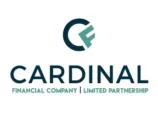Understanding Mortgage Affordability
Embarking on the journey of buying a home is thrilling yet daunting, largely hinging on a pivotal question: “How much can I afford?” Grasping the nuances of mortgage affordability isn’t just a cursory step; it’s a cornerstone of making a sound decision that aligns with your financial landscape and aspirations. This article dives deep into the essence of mortgage affordability, the role of mortgage affordability calculators, and the myriad factors that shape your potential home loan.
Mortgage Affordability Explained
At its core, mortgage affordability is about determining the loan amount you can manage without overstretching your finances. It’s a delicate balance – not merely about the sum a bank agrees to lend but about juggling this commitment alongside other life expenses.
Why Does It Matter?
Grasping your mortgage affordability is pivotal:
- Financial Blueprint: It forms the backbone of effective financial planning, ensuring your home loan doesn’t eclipse other financial responsibilities.
- Setting Boundaries: It aligns your property aspirations with reality, streamlining your search.
- The Peril of Overborrowing: It’s a shield against the pitfalls of overborrowing, a common trap that can lead to financial distress.
The Utility of Mortgage Affordability Calculators
These calculators are more than just tools; they are navigators in the tumultuous sea of home buying. By inputting details like income, debts, and other obligations, you get a snapshot of what you might borrow. Tweak the loan term or interest rates, and behold how your affordability shifts. This estimation, while not ironclad, is invaluable in mapping out your home-buying journey.
Variables That Affect Your Loan
The mortgage landscape is influenced by numerous factors:
- Income: The cornerstone of your loan, where lenders scrutinize your debt-to-income ratio.
- Existing Debts: Other debts can diminish how much you can borrow.
- Credit Score: A better score often translates to more favorable loan terms.
- Down Payment: A larger down payment can mean a smaller loan and sometimes better rates.
- Interest Rates: These can either expand or constrict your borrowing power.
- Loan Term: Longer terms equate to smaller monthly payments but more interest over the long haul.
- Additional Costs: Don’t overlook property taxes, insurance, and potential HOA fees.
Crafting Your Budget
To forge your home-buying budget:
- Assess Your Income: Aggregate all reliable income sources.
- Debts on the Table: Enumerate monthly financial obligations.
- Project Homeownership Costs: Homeownership extends beyond the mortgage – think taxes, insurance, HOA fees.
- Harness a Calculator: With these figures in hand, let the calculator paint a picture of what’s feasible.
Navigating the complexities of mortgage affordability is more than a step in buying a home – it’s a journey towards financial prudence. Armed with knowledge and the right tools, you’re not just seeking a maximum loan amount; you’re crafting a financially secure and comfortable future.
